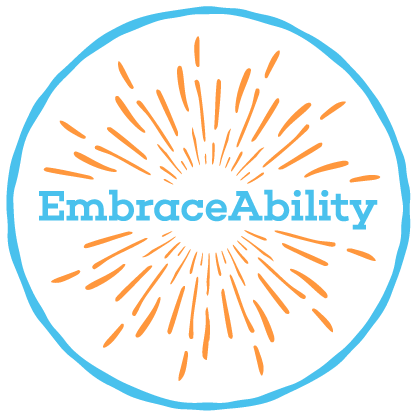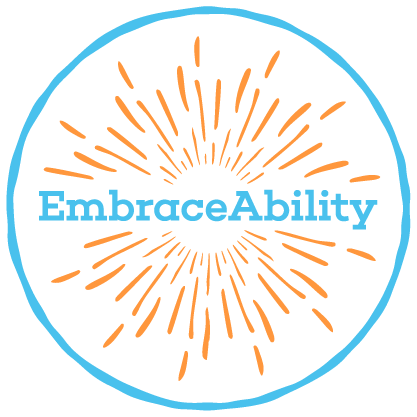International Day of Persons with Disabilities 2020
Today marks International Day of Persons with Disabilities. With the current COVID-19 pandemic we need to work towards a disability-inclusive, accessible and sustainable post COVID-19 World.
WHO estimates that more than one billion people - roughly 15% of the world’s population experience some form of disability. This figure is predicted to rise given population ageing and an increase in the prevalence of noncommunicable diseases. Although disability correlates with disadvantage, not all disabled people are equally disadvantaged. In low-middle income countries disabled people living in poverty are among the most stigmatised and marginalised people on earth. They often live in isolation and are excluded from their communities, from the education system, from healthcare and other vital services. Many disabled women and children face a heightened risk of domestic and sexual violence.
The COVID-19 pandemic has exacerbated the challenges disabled people across the world face from marginalization in social, economic and health terms, as well as limitations by public services to reach them. This marginalisation increases the threat to lives and livelihoods that the COVID-19 crisis poses.
What have we learnt from the COVID-19 pandemic?
At EmbraceAbility, our small team has been busy responding to the healthcare, educational and economic needs of our beneficiaries. Here is a snapshot of what we have learned so far.
Health Risks
Cambodia has fewer cases of COVID-19 confirmed than other countries in the region, but the virus remains a threat. Cambodia’s medical facilities and services are already overstretched and significantly under-funded. Despite significant progress made in the last few decades, the health care system needs further improvements to enable access to affordable health care and treatment to all Cambodians.
The families that participate in our programmes predominately work in the informal economy, including silk weavers, farmers and fishermen. Faced with economic challenges, the families are more likely to be exposed to the disease by having to work even when the probability of catching the disease is heightened. The majority of informal workers are not covered by the National Social Security Fund (NSSF) or other health insurance schemes, which could enable them to access health services and benefits.
The lack of accessible health insurance means workers are forced to continue working. The families on Koh Dach island have reported a 80% drop in income. This means attending healthcare appointments, keeping up with home therapy and buying essential medicine for other non COVID-19 related conditions is often dropped in favour of work.
Socio-economic impacts
New analysis shows that the economic crisis, caused by coronavirus, could push over half a billion people into poverty. In Cambodia, the key groups that are particularly affected include workers in the formal sectors, such as tourism, garment and entertainment sectors. Secondly, workers in the informal sector have been hit hard by the slowdown in the economic activity and restrictions on movements. Lastly, migrant workers returnees, youth, women, older people, disabled people and people living with HIV are also affected significantly.
The pandemic came at a time when the Cambodian economy was already facing some challenges. After the partial suspension of the Everything But Arms (EBA) preferential trade policy by the European Union, concerns over the impact of this decision on the country’s garment industries and travel goods were raised by many CSOs.
The already volatile situation is being exacerbated by COVID-19 and the spillovers are being felt largely through key channels: tourism, exports and foreign direct investment. Given the size of the shocks, knock-on effects to other sectors will also be substantial, with accompanying impacts on jobs, incomes and time use. Unemployment and poverty will likely rise, reaching even populations not traditionally regarded as vulnerable, and with significant gender effects.
The COVID-19 pandemic has also highlighted another major challenge: that of dangerously high microfinance debt. Over 80% of the families we work with have a microfinance debt and with many out of work, people can’t pay their loan payments to the banks, risking losing their land, house and other collaterals. Our analysis shows that families have also increased their loans which means further indebtedness will cause them to fall into deeper poverty.
Impact on Women
In a recent report by ADD, women are at increased risk of psychological and economic-related violence during COVID-19. This is consistent with various reports showing evidence of a multitude of repercussions such as rising gender based violence (GBV), limited access to sexual and reproductive health, an inrease in unpaid care work, economic indebtedness, repercussions for women deprived of their liberty, and increased risks of human trafficking.
The pandemic has dramatically increased the care work responsibilities of women e.g. household chores, cooking and childcare. The sporadic closure of all public and private educational institutions has added onto the overall burden of women as they bear much of the responsibility of childcare. With schools closed, many women cannot go to work as they are caring for their children.
Disabled women and girls are particularly vulnerable. Before the pandemic, participatory studies suggest that disable women, when compared to non-disabled women, were approximately four times more likely to experience controlling behaviour from partners. This is consistent with more recent assessments, which show disabled women and girls are four times more likely to have experienced violence than their non-disabled peers. Research emerging out of COVID-19 related studies shows that risk of violence has increased during the pandemic.
Education
Over 3 million children have been affected by school closures in Cambodia, and the scale of this crisis threatens to roll back years of progress and leave the most vulnerable deprived of an education. This has already had a significant impact on learning, while the long-term impacts could threaten the future of an entire generation.
We know from experience, notably the Ebola crisis, that epidemics that lead to school closures create huge barriers for children’s return to school, especially for the marginalised. Currently, 90% of disabled children do not attend school in Cambodia and those with additional learning needs have reported not being included by their teachers. Disabled children are at risk of falling behind at school and especially disabled girls; they are more likely to permanently drop out of school.
With schools closed and the imposition of physical distance, children are more than ever are relying on digital platforms for homeschooling. Families living in poverty do not have access to smart devices for their children and caregivers are often illiterate. The crisis carries huge impacts on disabled children's future survival, learning and protection.
Social Protection Policy and Policy Consideration
The COVID-19 pandemic has highlighted the gaps in social protection coverage around the world and prompted its recognition and importance to mitigate and effectively respond to the crisis. To the unfolding socio-economic impact of this crisis, social protection systems are an indispensable part of a coordinated policy response, so that people can access healthcare while supporting income security.
In recent years, Cambodia has seen positive progress on social protection development. The current contributory social insurance scheme managed by NSSF continues to have a relatively low coverage of approximately 2 million members out of a labour force of 8.8 million workers, while the coverage of the existing non-contributory schemes, such as ID Poor, remains at only 2% of the poorest quintile of the population. However, like many social protection policies in low-middle income countries, it does not support informal workers. Due to a lack of income security, our research shows that 68% of families have engaged in negative coping strategies such as purchasing food on credit or borrowing money to meet basic needs such as food and medicine.
It’s important that in response to the pandemic the crisis prioritises support to those who are particularly vulnerable, including informal workers, women, unpaid carers, children, garment and tourism sectors workers, and disabled people. They must ensure that their immediate needs are met through policies quickly.
The post-COVID-19 world gives us an opportunity to work towards a more inclusive and accessible future if we learn from the pandemic. Communities and governments must work together to build a stronger future where the needs of disabled people are included in healthcare, education and policy considerations.

